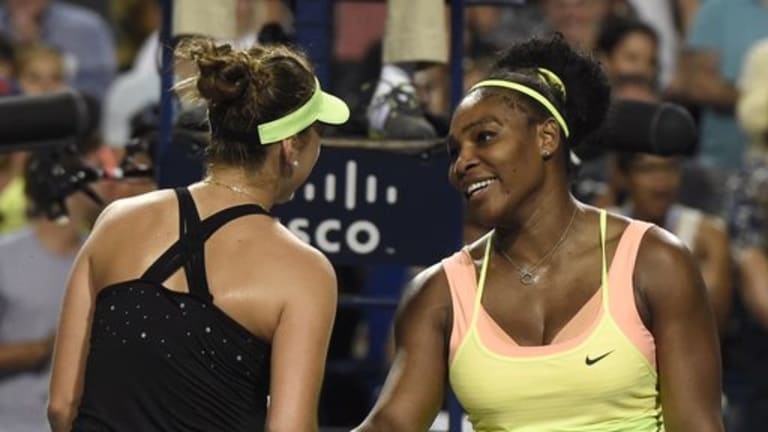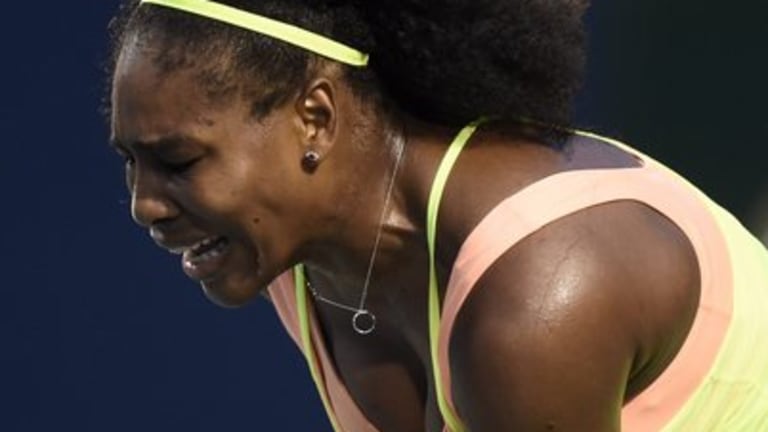"Serena has gone to the brink many times this season. Who will finally be able to push her over?"
I’ve written lines similar to those on a few occasions in 2015, and last night in Toronto I finally got my answer, when Belinda Bencic of Switzerland held on to upset Serena Williams and end her 19-match winning streak, 3-6, 7-5, 6-4.
On the one hand, this is a surprise: Bencic is 18, she’s ranked No. 20, she’s won one tournament in her career, and she had lost her only previous meeting to Serena 6-2, 6-1 in Madrid last spring. On that occasion, Bencic had admitted to being distracted just watching Serena, the woman she had seen so many times on TV, play in person. (Bencic was 2 years old when Serena won her first major, at the 1999 U.S. Open.) Before yesterday, Serena hadn’t lost to a teenager since Maria Sharapova beat her 11 years ago.
Look a little more closely, though, and it’s clear that Bencic’s performance shouldn’t have been a shock. We’ve known since at least last year’s U.S. Open, where she made the quarterfinals at 17, that this student of the Hingis family is, as they say, for real. Coming into her semi in Toronto, Bencic had already knocked off Eugenie Bouchard, Caroline Wozniacki, Sabine Lisicki and Ana Ivanovic—all of them former Grand Slam finalists.
As I wrote earlier in the week, Bencic combines Hingisian court sense with modern day ground-stroke pop. Most important for beating Serena, this young woman brings to mind an old-fashioned word: Moxie. Bencic tightened up at the end of the second set and third set, yet recovered to win them both. At 18, with the blind confidence of youth, she’s still testing her limits and making breakthroughs as a player every day. In her mind, why shouldn’t one of those breakthroughs include beating Serena Williams?

